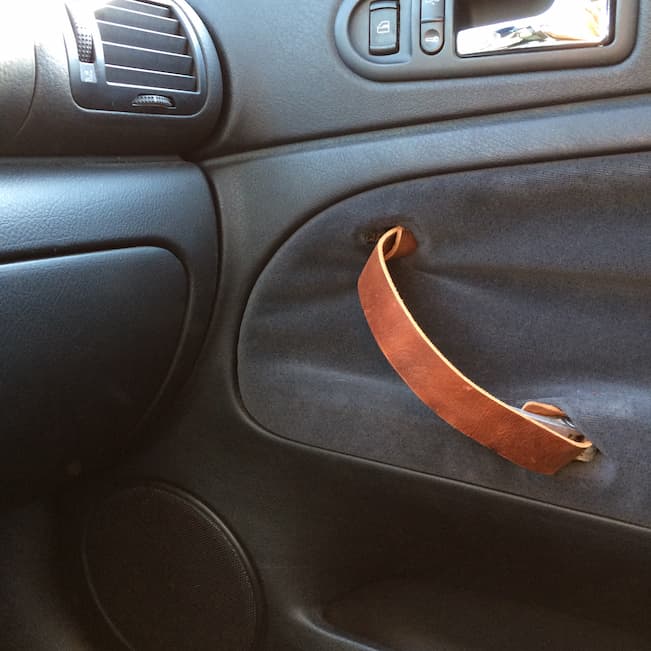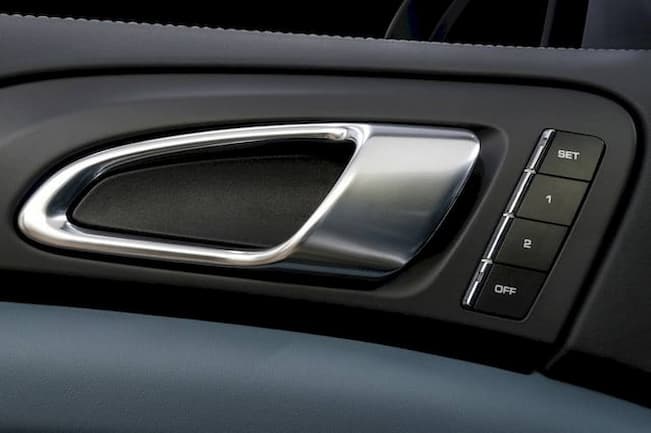The appearance and comfort of a vehicle’s cabin have come a long way since the early beginnings of the automotive industry. Once interiors were basic and utilitarian, however, today’s cars offer a blend of comfort, technology and style that is all thanks to a whole century of innovation.
One component that’s often overlooked but plays a crucial role in both functionality and aesthetics is the handle. Not only do handles make entering and exiting your vehicle easier, but they also affect how your car looks and feels, despite being one small part of the door. Thoughtfully designed car interior handles can elevate the sense of quality in your car, while flimsy ones can make it seem like it’s not that good.
Types of Interior Door Handles
Pull
The pull-type car interior handle is one of the most common and straightforward designs. You simply grab the inside car handle and pull it towards you to unlatch and open the door. This style is popular because it’s intuitive and easy to use, making it a staple in many cars, especially in affordable models.

Pull car interior handles are available in both vertical and horizontal orientations, and their simplicity means they’re often more durable and cost-effective to manufacture. An inside car handle of this type is designed with ergonomics in mind, as it usually fits rather comfortably in the hand.
Trigger
Trigger handles add a bit more complexity to the standard pull design. The design requires you to pull a small trigger or lever, usually located within the main handle, in order to release the latch. This design was popular in the 1970s but has become less common due to safety standards. However, some classic cars and utility vehicles still use trigger-style interior car door handles.
Lever
Lever handles are another classic option, often found in older cars. These handles operate by pushing or pulling a lever, which then releases the latch mechanism. Lever-style car interior handles can be mounted in various positions and are valued for their mechanical simplicity and ease of repair. Their straightforward operation makes them favourable when it comes to durability.
Push-Button
Push-button handles require you to press a button, either integrated into the handle or positioned nearby, to open the door. This design gained popularity during the 20th century. However, it’s still used in some modern vehicles for its clean, minimalist look. Push-button interior car door handles can be quite useful when your hands are full.
Electronic
As car technology advances, electronic handles are becoming more prevalent, especially in luxurious and electric vehicles. These handles rely on sensors or touch-sensitive surfaces to open the door, with just a light tap. Electronic interior handles can be integrated with central locking, child safety locks, and even biometric security features. They also make for a more futuristic appearance and are often paired with ambient lighting for added visual appeal.
Flush
Flush handles sit level with the door panel and only pop out or become accessible when needed. This design is popular in modern cars for its sleek, aerodynamic appearance and is often used in conjunction with electronic opening systems. Flush interior car door handles contribute to a minimalist look.
Back-to-Back
Back-to-back handles are commonly seen in larger vehicles or those with sliding doors. These handles are mounted on both sides of the door, allowing for easy operation from either direction. They’re practical for vans, SUVs and some commercial vehicles, as they help make entering and exiting a vehicle more convenient.
Materials of Interior Door Handles
Plastic
Plastic is the most widely used material for interior handles, especially in budget vehicles. This lightweight and cost-effective material can be moulded into almost any shape or finish. While basic plastic handles may feel less premium, modern plastics can be textured, painted or coated to mimic more expensive materials, which makes for a balance between durability and affordability.
Metal

Metal handles, often made from aluminium, zinc or magnesium alloys, are favoured for their strength and premium feel. They’re commonly found in luxury vehicles, where the solid weight and cool touch of metal add to the sense of the car’s build quality. Metal interior car door handles are also more resistant to everyday wear.
Fibreglass
Fibreglass isn’t used much often for the making of handles, but it offers a lightweight and strong alternative to metal and plastic. It’s particularly valued in performance and sports cars, where every gram counts. Fibreglass interior handles can be shaped into complex forms and are resistant to corrosion, making them a durable choice for demanding environments.
Leather
Leather-wrapped handles are synonymous with luxury and comfort. By covering the base handle with high-quality leather, manufacturers create a soft, tactile surface that feels warm and inviting. Leather interior car door handles are usually found in premium vehicles and can be colour-matched to the rest of the cabin for a more uniform look.
Carbon Fibre
The ultimate material when it comes to lightweight performance and modern aesthetics, carbon fibre is used, especially, in high-end sports and luxury cars. Carbon fibre handles are extremely strong and add a distinctive, aggressive appearance to the interior. While expensive, they’re often chosen for their unique look.
























